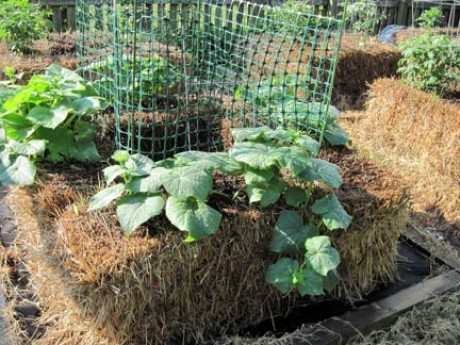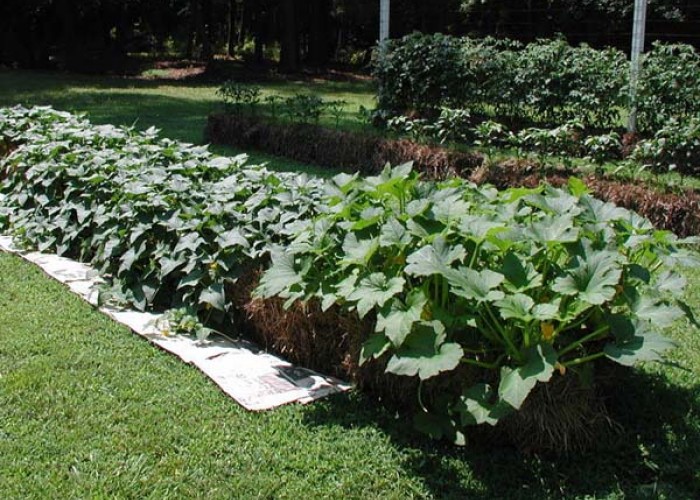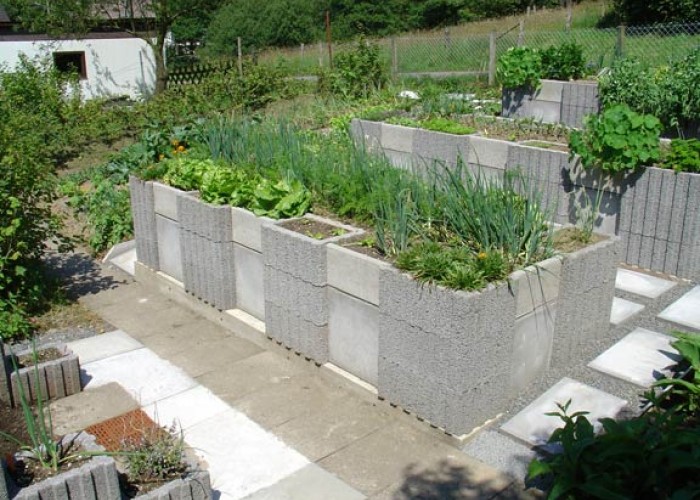Straw Bale Gardening
By Kent Rogers
Kent Rogers of Wake Forest has successfully cultivated a vegetable garden in bales of straw. Kent points out that the method produces good looking, healthy plants without weeds, and is especially convenient for people who don't have a large plot of ground to till, or who are physically unable to do a lot of kneeling, bending, raking and hoeing.
Here is some of his advice for people interested in straw bale gardening. Kent is a member of Wake Electric, a Touchstone Energy cooperative. You can contact him by mail at 13028 Powell Rd, Wake Forest, NC 27587, and by e-mail at kent.rogers@earthlink.net.
Getting started
I have learned that any type of straw or hay bale will work. Pine straw will not work. Bales that are tightly packed work best.
Use bales with regular twine if you can, because the twine will rot along with the bale. Synthetic twine does not rot but will be OK. Shop around for bale prices.
Arrange your bales in rows so they can help hold each other together. Orienting the bales with strings on the ground works best.
If you make more than one row of bales, put them wide enough apart so your lawnmower can get between them. And because you'll be watering them, place bales where the water will drain away.
You can use seeds if you add some potting mix on top of the bales for germination. I transplant my vegetables directly into the bales.
It takes 10 days to prepare your bales.
Days 1–3: Water the bales thoroughly each day.
Days 4–6: Sprinkle the bales with ½ cup of ammonium nitrate or sulphate (34-0- 0) per bale per day and water it in.
Days 7–9: Cut back to ¼ cup of the nitrate/sulphate per bale per day and continue to water it in.
Day 10: No more nitrate/sulphate, but continue to keep the bales damp.
Day 11: Transplant your veggies into the bales. Use a trowel to help make a crack in the bale for each plant. Place the plant down to its first leaf. I like adding some potting mix to chink the crack around the plant. Close the crack back together.
How many plants per bale?
Try 2 or 3 tomato plants, 3 peppers, 2 sets of squash, up to 4 cucumber sets, and 3 or 4 okra plants per bale. Be prepared to stake or trellis any plant with a stalk. I recommend using a tall trellis for tomatoes. Tomatoes can easily get 8 feet tall.
I don't recommend corn with this method. They will get too top heavy.
Water the bales as needed but at least once a day in the beginning. Just don't let the bales get dried out.
I recommend some sort of liquid fertilizer. I use liquid Miracle Gro as needed.
The bales may start to sprout, but that is no problem. I give my bales a "haircut" every so often with a knife.
I don't have nearly the worms, bugs, or other pests as a traditional garden, but use pesticides or fungicides as needed.
At season's end you can use the bales for mulch, or bust them up and set new bales on them next year.
About the Author
Kent Rogers of Wake Forest is a member of Wake Electric, a Touchstone Energy cooperative. You can contact him by mail at 13028 Powell Rd, Wake Forest, NC 27587, and by e-mail at kent.rogers@earthlink.net-
More straw bales and other unconventional garden ideas
-
Share this story:







Comments (5)
Julee |
July 01, 2014 |
reply
Barbara Curd |
April 19, 2016 |
reply
Jim |
April 28, 2017 |
reply
M L |
April 30, 2023 |
reply
M L |
May 23, 2023 |
reply